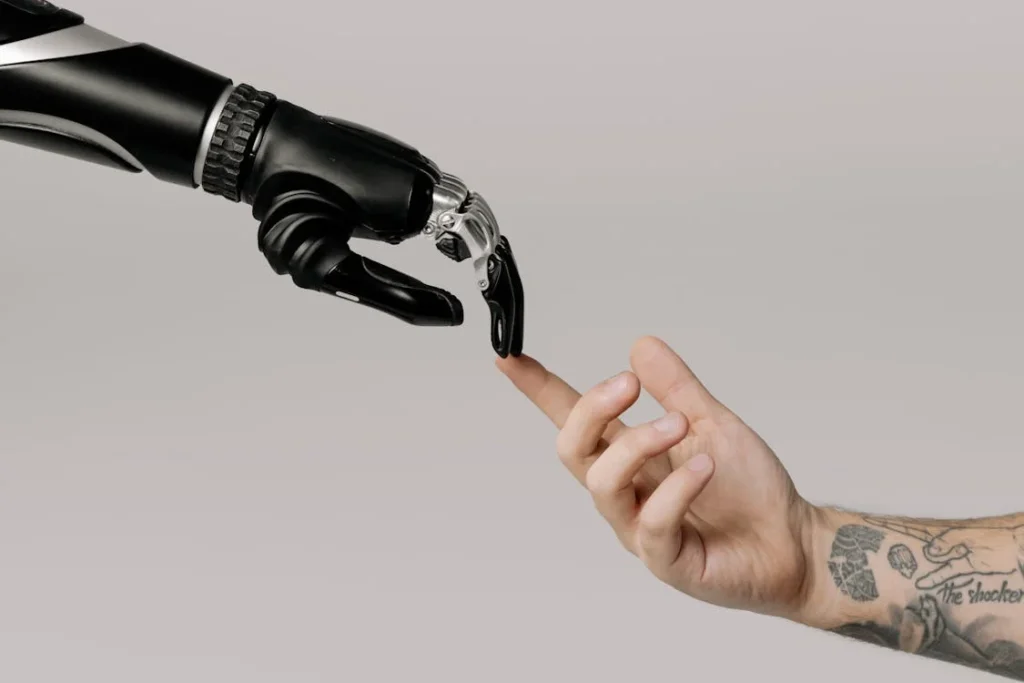A well-fitting prosthetic limb can make a world of difference in your daily life. It should feel like an extension of your body—smooth, natural, and reliable. However, there are times when your prosthetic might feel uncomfortable, which can disrupt your routine and affect your confidence. Whether you’re new to wearing a prosthetic or have been using one for years, it’s crucial to know how to address fit issues so you can maintain comfort and continue living your life to the fullest.
This guide will walk you through the common reasons behind an uncomfortable prosthetic fit and provide practical steps to regain that perfect connection between you and your device. By understanding your prosthetic and how to care for it, you’ll not only enhance its fit but also extend its lifespan.
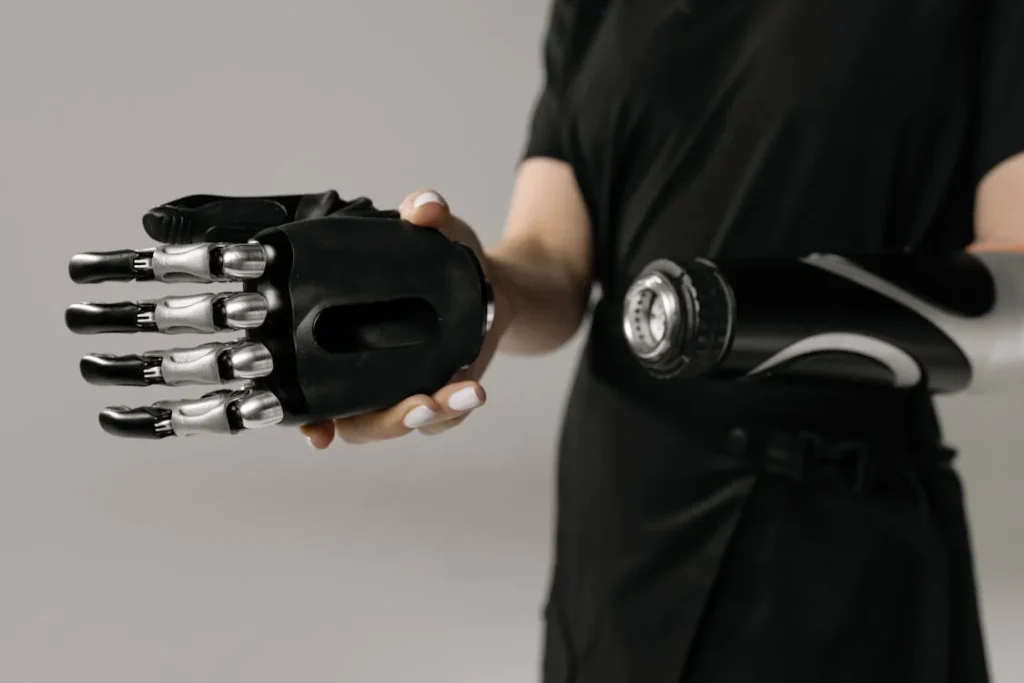
Understanding Why Your Prosthetic Feels Uncomfortable
A prosthetic device is a marvel of engineering, but its comfort depends on the delicate balance between the user’s body and the device itself.
Discomfort isn’t just a physical inconvenience—it can hinder mobility, affect confidence, and even lead to health complications if left unresolved. To address this effectively, it’s important to understand the strategic factors contributing to an uncomfortable prosthetic fit.
The Dynamic Nature of Your Residual Limb
Your body is constantly adapting and changing, and the residual limb is no exception. These changes can result from swelling, weight fluctuations, or muscle tone variations.
For instance, when your residual limb swells due to heat, humidity, or overuse, the socket may feel too tight, leading to pressure points and irritation.
Conversely, if the limb shrinks, the prosthetic can become loose, causing instability and friction. Recognizing these changes as part of a dynamic process is critical to addressing and managing discomfort.
The Impact of Prosthetic Component Wear
Every component in your prosthetic—whether it’s the liner, socket, or suspension system—plays a unique role in ensuring a snug fit. Over time, natural wear and tear can degrade these components, leading to issues like uneven pressure distribution or compromised functionality.
For instance, a liner that has thinned out may no longer cushion your residual limb effectively, increasing the risk of irritation or even injury. Strategic maintenance and timely replacements can significantly reduce discomfort and prolong the lifespan of your prosthetic.
Misalignment and Its Ripple Effects
Alignment is the backbone of prosthetic comfort and functionality. Even a minor misalignment can cascade into significant discomfort.
For example, improper alignment might force you to adjust your gait unnaturally, which can lead to strain on other parts of your body, such as your hips, knees, or back.
Misalignment can occur due to normal wear, accidental impacts, or even subtle shifts during adjustments. Regular professional evaluations can help detect and correct alignment issues before they become problematic.
The Role of Environmental and Lifestyle Factors
Environmental conditions and daily habits can also influence how your prosthetic feels. High temperatures, for example, can increase sweating, causing your liner to slip and your socket to feel unstable.
Similarly, engaging in activities that your prosthetic wasn’t designed for can strain its components, compromising both fit and comfort. Identifying and managing these external factors is a strategic step toward long-term comfort and functionality.
Skin Health as a Foundational Element
Your skin serves as the primary point of contact between your body and the prosthetic. Any compromise in skin health—whether due to poor hygiene, improper fit, or allergies to materials—can directly impact comfort.
For instance, prolonged exposure to moisture under the liner can lead to skin breakdown, infections, or irritation. Maintaining a rigorous skin care routine and addressing any issues promptly is essential for a comfortable prosthetic experience.
Psychological Perception and Fit
It’s worth noting that comfort isn’t solely a physical matter—it’s also influenced by your psychological perception. If you’re anxious about using your prosthetic or have lingering doubts about its fit, you might interpret minor sensations as significant discomfort.
Building confidence through consistent use, professional support, and open communication with your prosthetist can help you overcome these mental barriers and enhance your overall experience.
The Strategic Approach to Understanding Discomfort
Addressing prosthetic discomfort requires a strategic and holistic approach. By closely monitoring the interplay between your body, your prosthetic, and your environment, you can identify patterns and potential triggers for discomfort.
This awareness, combined with regular maintenance and professional consultations, creates a proactive framework for ensuring your prosthetic remains a reliable and comfortable part of your life.
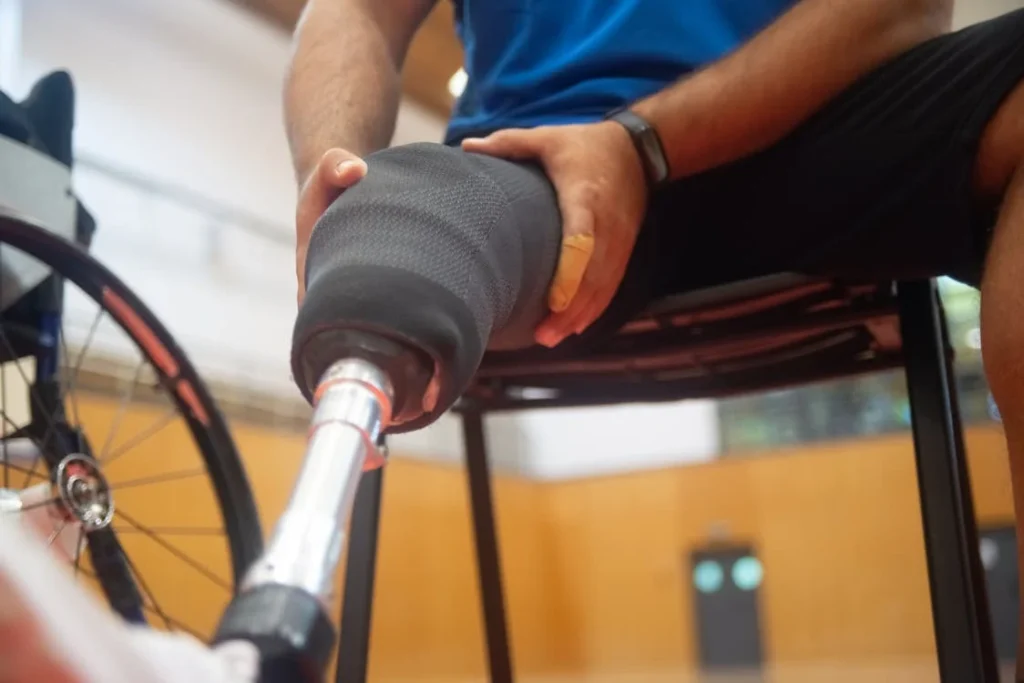
Steps to Regain Comfort
Experiencing discomfort with your prosthetic doesn’t have to disrupt your life. The key lies in addressing the issue strategically and methodically, focusing on the root causes while incorporating solutions tailored to your unique situation.
Each step you take toward regaining comfort is an opportunity to strengthen your connection with your prosthetic, ensuring it functions as a seamless extension of your body.
Begin with a Detailed Self-Assessment
The first step in addressing discomfort is understanding its nature. Pay close attention to how your prosthetic feels during different activities and at various times of the day.
Are there specific movements that trigger pain? Do you notice discomfort after prolonged use, or does it occur immediately upon wearing the device? A detailed self-assessment helps you pinpoint the problem areas and provides valuable information to share with your prosthetist.
Understanding the timing and severity of the discomfort can also reveal patterns. For instance, discomfort that worsens in the afternoon may be linked to swelling, while persistent pain might indicate a misaligned socket.
This process is not just about identifying problems; it’s about building a deeper awareness of how your prosthetic interacts with your body.
Make Small Adjustments to Fine-Tune the Fit
Sometimes, minor adjustments can make a significant difference in comfort. For example, adding or removing layers of prosthetic socks can temporarily address changes in residual limb volume.
However, it’s important to approach adjustments strategically. Experimenting with fit should be done methodically, and you should observe how each change impacts comfort and function.
If small adjustments don’t resolve the issue, it may indicate a need for professional intervention. Your prosthetist can refine the socket or replace components like liners or straps to restore optimal fit.
Being proactive about these adjustments ensures that minor issues don’t escalate into major challenges.
Prioritize Cleaning and Hygiene
A clean prosthetic not only feels better but also prevents complications like skin irritation and infections. Sweat and dirt can accumulate quickly, especially during active use, compromising the prosthetic’s grip and comfort.
Maintaining a consistent cleaning routine is crucial to preserving the device’s functionality and ensuring your skin remains healthy.
Beyond regular cleaning, ensure that your liners and other soft components are thoroughly dried before wearing.
Moisture trapped against the skin can lead to chafing or fungal infections, both of which can significantly impact your comfort. Incorporating cleaning into your daily routine is a simple yet effective way to enhance the overall prosthetic experience.
Revisit Your Alignment
Alignment plays a foundational role in the comfort and performance of your prosthetic. Misalignment often manifests as pressure points, uneven weight distribution, or restricted movement.
If you suspect alignment issues, don’t hesitate to seek professional help. A prosthetist can evaluate the device’s positioning and make precise adjustments to restore its balance and functionality.
Proper alignment not only alleviates immediate discomfort but also improves your posture and gait. This, in turn, reduces strain on other parts of your body, preventing secondary issues like back or joint pain.
Think of alignment as the cornerstone of a well-functioning prosthetic—it’s worth the investment of time and expertise to get it right.
Incorporate Rehabilitation and Training
Rehabilitation isn’t just for new prosthetic users—it’s a valuable tool for anyone experiencing discomfort or difficulty. By working with a trained professional, you can refine your movements, improve muscle memory, and learn techniques to optimize how you use your prosthetic.
Robobionics’ gamified rehabilitation programs, for example, combine technology and expert guidance to make the process engaging and effective. These programs help you adapt to changes in your body or prosthetic, ensuring you regain comfort and confidence in your mobility.
Establish a Long-Term Maintenance Plan
Comfort isn’t achieved through a one-time fix; it’s a continuous process that requires attention and care. Scheduling regular checkups with your prosthetist is essential for catching potential issues early.
These appointments provide an opportunity to evaluate the fit, functionality, and condition of your prosthetic, ensuring it remains aligned with your needs.
Additionally, keeping track of your residual limb’s health and any changes in your daily activities can help you anticipate and address discomfort before it becomes a problem.
A proactive approach to maintenance not only preserves the comfort of your prosthetic but also enhances its longevity and reliability.
Seek Professional Guidance When Needed
While some steps can be taken at home, there are times when professional intervention is necessary. Persistent discomfort, significant changes in your residual limb, or visible damage to your prosthetic all warrant immediate attention from a qualified prosthetist.
Seeking help promptly can prevent further complications and restore your quality of life more efficiently.

When to Seek Professional Help
Discomfort with a prosthetic can sometimes be resolved through simple adjustments, but there are situations where professional intervention is essential.
Knowing when to reach out for expert assistance is a critical part of maintaining not only your prosthetic but also your overall well-being. A strategic approach to seeking help ensures that issues are addressed before they escalate, preserving your mobility, comfort, and confidence.
Recognizing Persistent Discomfort
Persistent discomfort is one of the clearest signs that professional help is needed. If you experience ongoing pain or irritation that doesn’t improve despite trying minor adjustments at home, it’s time to consult your prosthetist.
Persistent issues may point to deeper problems, such as an improperly fitted socket, misalignment, or underlying skin conditions. A professional evaluation will help identify the root cause and determine the best course of action.
Ignoring persistent discomfort can have a cascading effect. Overcompensating for pain might alter your posture or gait, leading to strain on other parts of your body, such as your hips, knees, or back.
Addressing the problem early prevents these secondary issues and ensures you maintain proper biomechanics.
Addressing Significant Residual Limb Changes
Your residual limb’s size and shape can change over time due to weight fluctuations, muscle atrophy, or swelling. These changes may result in a socket that no longer fits snugly, causing instability or pressure points.
While minor volume adjustments can be managed with prosthetic socks, significant changes often require professional modifications.
A prosthetist can assess your residual limb and recommend solutions, such as resizing the socket or creating a new one entirely. These adjustments ensure that your prosthetic continues to fit comfortably and functions optimally, adapting to your body’s natural evolution.
Repairing and Replacing Worn Components
Every prosthetic is subject to wear and tear, no matter how well it is maintained. Components like liners, straps, and suspension systems can degrade over time, impacting the prosthetic’s fit and function.
If you notice signs of wear—such as cracking, fraying, or reduced support—it’s crucial to seek professional help.
Attempting to use a worn or damaged prosthetic can lead to further discomfort and even compromise your safety.
A prosthetist can evaluate the condition of your device, replace worn parts, and ensure everything is working as intended. This proactive approach not only restores comfort but also extends the life of your prosthetic.
Managing Skin Irritation and Injuries
Skin irritation, blisters, or open sores are common signs that your prosthetic isn’t fitting correctly or that hygiene routines need improvement.
If these issues persist or worsen, it’s essential to consult a prosthetist or dermatologist. They can help address the immediate skin problems and recommend adjustments to your prosthetic or liner to prevent future occurrences.
Healthy skin is fundamental to a comfortable prosthetic experience. Professional care ensures that any underlying issues are resolved, reducing the risk of infections and improving your overall comfort.
Ensuring Long-Term Alignment
Alignment is a critical factor that directly affects how your prosthetic feels and functions. Even minor alignment shifts can lead to discomfort, restricted movement, or uneven pressure distribution.
If you feel off-balance, experience new pain, or notice changes in how your prosthetic performs, it’s time to consult a professional.
Prosthetists use advanced tools and techniques to assess alignment and make precise adjustments. Their expertise ensures that your prosthetic supports your natural movement, reducing strain and improving your overall mobility.
Proper alignment is not just about comfort—it’s about optimizing your prosthetic for long-term functionality and safety.
Trusting Professional Expertise
Seeking professional help is not a sign of failure—it’s a proactive step toward improving your quality of life. Prosthetists bring a wealth of knowledge and experience to every evaluation, offering solutions that are tailored to your specific needs.
Their insights can uncover issues you might not have considered, ensuring a comprehensive approach to resolving discomfort.

Tips for Preventing Future Discomfort
Preventing discomfort with your prosthetic is as important as resolving it when it arises.
A strategic, forward-thinking approach to care and maintenance can help you avoid many common challenges, ensuring that your prosthetic remains a reliable and comfortable part of your daily life.
Prevention is not just about avoiding issues—it’s about fostering a seamless connection between your body and your device for long-term success.
Prioritize Regular Professional Checkups
One of the most effective ways to prevent future discomfort is to schedule regular evaluations with your prosthetist.
These checkups provide an opportunity to assess the fit and function of your prosthetic, identify early signs of wear or misalignment, and make necessary adjustments before minor issues become major concerns.
Consistent monitoring also allows your prosthetist to account for any changes in your residual limb and ensure your prosthetic adapts to these variations over time.
Building a routine around these checkups not only enhances comfort but also ensures that your prosthetic continues to meet your needs as your lifestyle evolves.
Even if you’re not experiencing discomfort, regular appointments are a proactive investment in your mobility and well-being.
Develop a Comprehensive Maintenance Routine
A well-maintained prosthetic is less likely to cause discomfort. Routine cleaning, careful inspection of components, and timely repairs are essential to keep your device in optimal condition.
When cleaning your prosthetic, pay close attention to areas like the socket and liner, where dirt, sweat, and bacteria tend to accumulate. These contaminants can irritate your skin and degrade the materials, leading to discomfort or infections.
Beyond cleaning, make it a habit to inspect your prosthetic for signs of wear, such as thinning liners, loose straps, or damaged components. Addressing these issues early not only prevents discomfort but also extends the life of your prosthetic.
Stay Attuned to Your Body’s Signals
Your body communicates subtle signals when something isn’t right. Paying close attention to how your prosthetic feels during daily activities can help you identify potential issues early.
If you notice redness, swelling, or unusual pressure after wearing your device, these are signs that adjustments may be needed.
Strategically incorporating these observations into your care routine allows you to address minor fit issues before they escalate.
It’s also important to remain flexible in your approach; for instance, you might need to adjust your prosthetic’s fit on particularly active days or during temperature fluctuations that affect your residual limb’s size.
Adapt to Lifestyle Changes
As your lifestyle evolves, so do the demands placed on your prosthetic. Activities that were once routine might now require different levels of support or functionality.
For instance, taking up a new sport or hobby may strain your prosthetic in ways it wasn’t initially designed to handle.
Proactively discussing these changes with your prosthetist ensures that your prosthetic remains suited to your current needs.
Adjustments such as strengthening certain components or upgrading to a more advanced model can significantly enhance your comfort and performance in new activities.
Foster a Skin-Care-First Approach
Healthy skin is a cornerstone of prosthetic comfort. To prevent irritation and maintain the integrity of your skin, adopt a consistent hygiene routine tailored to your needs.
Clean and dry your residual limb thoroughly each day, and use products designed to protect and soothe the skin without interfering with your prosthetic’s grip.
If you’re prone to sweating, consider moisture-wicking liners or anti-perspirant products designed for prosthetic users. Additionally, check for signs of irritation, such as redness or blistering, and address these concerns promptly to prevent long-term issues.
Embrace the Role of Rehabilitation
Rehabilitation isn’t just for new prosthetic users—it’s a valuable tool for preventing discomfort at any stage.
Regularly working with a physical therapist or participating in gamified rehabilitation programs can help you refine your movements, strengthen supporting muscles, and improve your prosthetic’s functionality.
These practices enhance your body’s adaptability and reduce the likelihood of strain or misalignment.
Build a Partnership with Your Prosthetist
Preventing discomfort isn’t a solo effort—it’s a collaborative process that benefits greatly from a strong relationship with your prosthetist. Open communication about your needs, challenges, and goals helps your prosthetist tailor solutions to your unique circumstances.
Don’t hesitate to ask questions or share observations about your prosthetic’s performance; these insights are invaluable for making adjustments that enhance comfort and functionality.
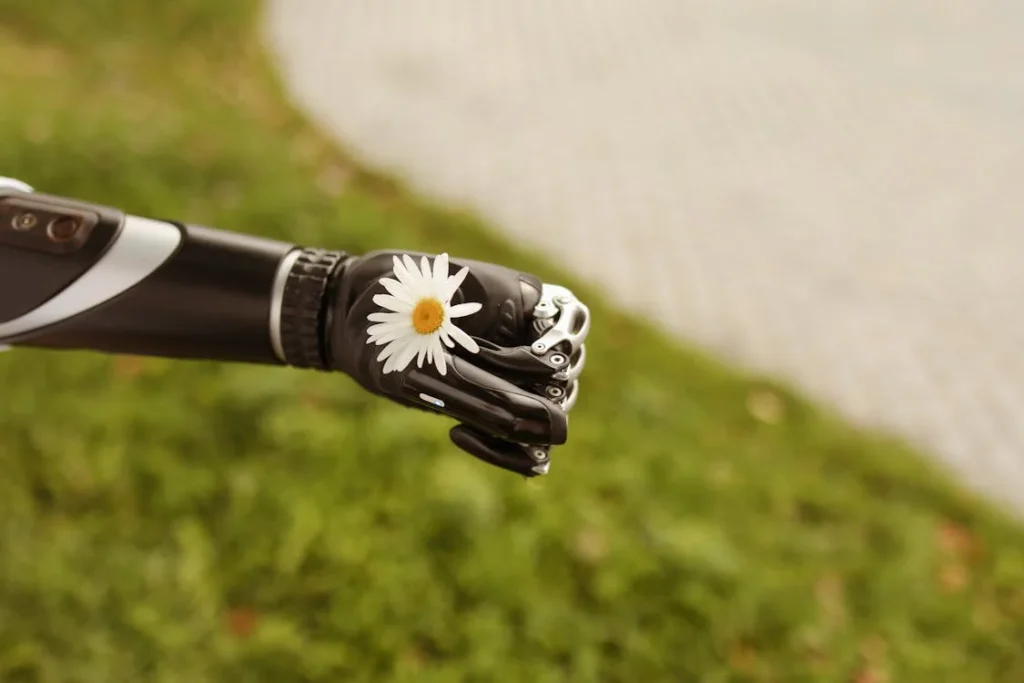
The Emotional Side of Prosthetic Discomfort
Prosthetic discomfort isn’t just a physical challenge—it can deeply impact your emotional well-being. Feelings of frustration, discouragement, or even self-doubt often accompany the experience of an uncomfortable prosthetic.
While physical adjustments can address fit-related issues, it’s equally important to recognize and address the emotional toll that discomfort can take. Understanding and managing these emotions is a vital part of achieving a positive prosthetic experience.
Recognizing the Emotional Impact
Discomfort with your prosthetic can lead to a sense of helplessness, especially if it disrupts your ability to perform everyday tasks. This may result in a cycle where physical pain or inconvenience exacerbates emotional stress, further hindering your ability to adapt to the device.
Acknowledging this emotional impact is the first step toward regaining control and confidence.
It’s important to remember that these feelings are valid and not uncommon. Many prosthetic users share similar experiences, and understanding that you are not alone can provide a sense of relief.
Seeking support from others who have faced similar challenges can help you navigate these emotions with greater ease.
Building Resilience Through Support
Having a strong support system can make a world of difference when dealing with the emotional side of prosthetic discomfort. Open communication with friends, family, and healthcare providers allows you to express your concerns and seek encouragement.
Sometimes, simply sharing your experience with someone who listens can ease the burden.
Additionally, connecting with other prosthetic users through support groups or online communities can be incredibly empowering. Hearing about their strategies for overcoming challenges and their journeys of adaptation can inspire you to persevere.
These connections create a sense of belonging and remind you that discomfort is a temporary hurdle, not a permanent roadblock.
Shifting Your Perspective
While discomfort may feel overwhelming in the moment, reframing your perspective can help you manage its emotional impact. Instead of viewing discomfort as a setback, consider it an opportunity to fine-tune your prosthetic and improve your overall experience.
This shift in mindset can transform feelings of frustration into proactive problem-solving.
Focusing on small victories—such as identifying and addressing a specific pressure point or successfully completing a day with less discomfort—can boost your confidence and motivate you to continue working toward long-term comfort.
Over time, these incremental improvements add up, reinforcing a sense of achievement and progress.
Incorporating Self-Care Practices
Caring for your emotional well-being is just as important as maintaining your prosthetic. Activities like mindfulness meditation, gentle exercise, or journaling can help reduce stress and foster a positive mindset.
These practices encourage you to focus on the aspects of your life that bring joy and fulfillment, rather than solely on the challenges you face.
Taking time for self-care also enhances your ability to approach discomfort with patience and resilience. By nurturing your emotional health, you create a strong foundation for tackling the physical aspects of prosthetic discomfort with clarity and determination.
Seeking Professional Guidance
If the emotional strain of prosthetic discomfort becomes overwhelming, don’t hesitate to seek help from a mental health professional.
Counselors or therapists experienced in working with individuals with limb loss can provide valuable tools for managing stress, anxiety, or depression.
These professionals can guide you in navigating the emotional challenges associated with prosthetic use, helping you regain a sense of balance and confidence.
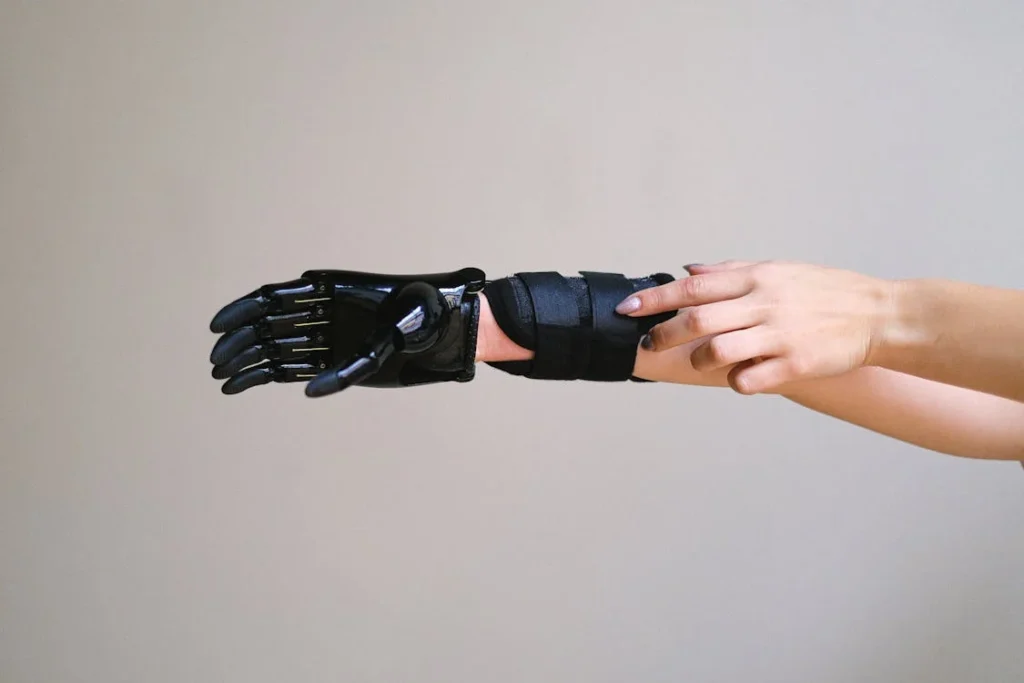
The Role of Advanced Prosthetics in Comfort
Advancements in prosthetic technology have redefined what comfort and functionality mean for individuals with limb loss.
Modern prosthetics are designed to go beyond basic mobility, offering solutions that integrate seamlessly with the user’s body and lifestyle.
These innovations are not just about adding features—they are about enhancing the user’s experience by addressing common challenges like discomfort, misalignment, and adaptability.
Understanding the role of advanced prosthetics in delivering comfort begins with exploring how cutting-edge designs and materials create devices that truly feel like an extension of the body.
Personalized Fit for Enhanced Comfort
One of the greatest advantages of advanced prosthetics is their ability to be customized to the individual.
Unlike traditional devices, which may rely on generalized designs, modern prosthetics use technologies like 3D scanning and printing to create sockets and components tailored precisely to the user’s residual limb.
This level of customization minimizes pressure points and enhances weight distribution, significantly reducing the risk of discomfort.
For instance, the use of dynamic materials that adapt to changes in the residual limb ensures a consistent fit even as the body evolves. This adaptability fosters a closer, more natural connection between the user and the device, making daily activities more intuitive and pain-free.
Lightweight Materials for Effortless Use
The materials used in advanced prosthetics play a pivotal role in improving comfort. Traditional prosthetics often relied on heavy or rigid materials that could strain the body over time.
In contrast, modern devices incorporate lightweight, durable composites that reduce fatigue and enhance maneuverability.
These materials not only provide structural support but also allow for greater flexibility and responsiveness. For example, carbon fiber components can store and release energy during movement, mimicking the natural function of muscles and joints.
This energy-efficient design not only improves performance but also reduces the physical effort required to use the prosthetic, making it a more comfortable experience overall.
The Integration of Smart Technology
Advanced prosthetics leverage smart technologies to deliver unparalleled levels of control and comfort.
Features such as myoelectric sensors and microprocessors allow the device to respond to subtle muscle movements, providing a more intuitive and natural user experience.
These technologies eliminate the need for exaggerated or repetitive motions, reducing strain on the body and enhancing comfort during extended use.
In addition to improving functionality, smart technology enables prosthetics to adapt to different environments and activities.
Devices can automatically adjust their grip strength, walking pace, or alignment based on the user’s needs, ensuring consistent comfort across a variety of scenarios.
Addressing Skin Health with Innovative Liners
The interface between the residual limb and the prosthetic socket is critical to comfort, and advanced prosthetics prioritize this area with innovative liner technologies.
Modern liners are designed to reduce friction, wick away moisture, and accommodate the skin’s natural movements, preventing irritation and sores.
Silicone, gel, and hybrid liners offer a combination of cushioning and durability, ensuring a secure yet gentle connection with the residual limb.
Some liners even incorporate antibacterial properties or cooling technologies to promote skin health and reduce the risk of infection, adding another layer of comfort for users.
The Psychological Impact of Advanced Comfort
Beyond physical improvements, the comfort provided by advanced prosthetics has a profound psychological impact. When a prosthetic feels secure, responsive, and natural, users often report increased confidence and a greater sense of independence.
This emotional uplift is not just a byproduct—it’s a fundamental aspect of what makes modern prosthetics transformative.
Knowing that their prosthetic will perform reliably in a variety of situations allows users to approach their daily lives with fewer worries about discomfort or limitations. This peace of mind is a testament to the importance of comfort in fostering a sense of normalcy and empowerment.
Conclusion
Maintaining the comfort of your prosthetic is a journey that requires attention, care, and adaptability. By understanding the causes of discomfort, addressing issues promptly, and leveraging modern advancements in prosthetic technology, you can ensure a better fit and a more empowering experience. Comfort is not just about physical ease—it’s about restoring independence, confidence, and a sense of normalcy in your daily life.
At Robobionics, we are dedicated to supporting you on this journey. From personalized adjustments and innovative solutions to gamified rehabilitation programs, our goal is to help you feel at home with your prosthetic. Discomfort is a challenge, but with the right guidance and resources, it can be overcome.
If you’re ready to take the next step toward a more comfortable prosthetic experience, contact Robobionics today. Let us help you live life to the fullest.



